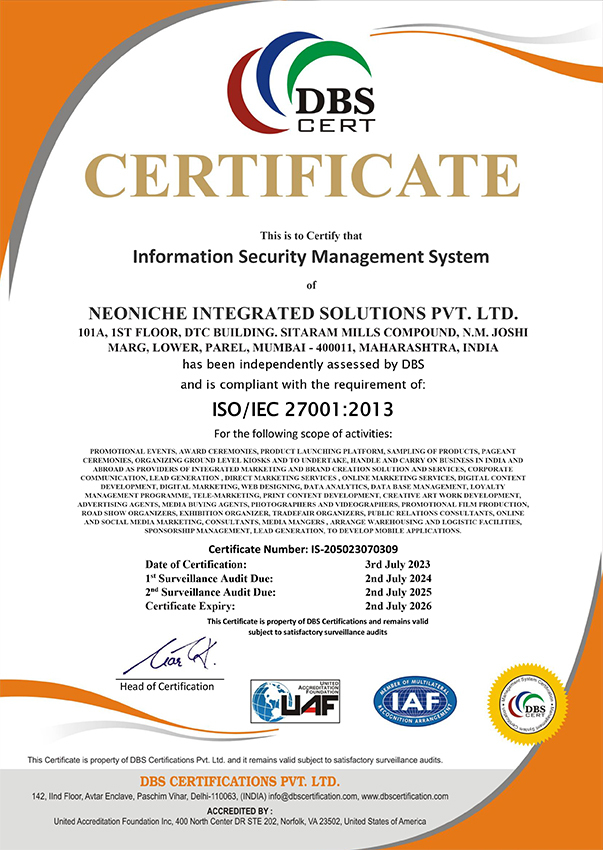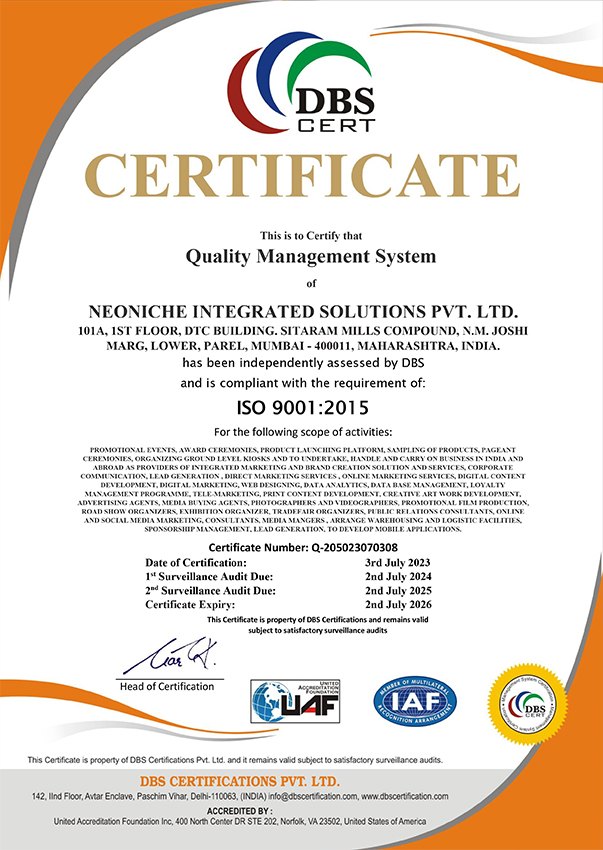This evolution to an experience-driven society reflects a shift in consumer behaviour and demands. Modern customers want brands that speak to their specific needs. Since every experience is a singularly individual, brands should make an effort to connect with individual customers in a personal yet non-intrusive way. Experiential marketing is fast becoming the catalyst for unprecedented brand-to- consumer interactions that often translate into improved brand recognition, recall and loyalty. And yes, higher sales.
Organizations are not just marketing to people anymore; there are engaging them, to become brand advocates and help market their brands by influencing their networks. Savvy marketers are capitalizing on live engagements by creating a series of touch points that can in turn create a lifetime relationship with the consumer.
The best experiential marketing campaigns capture marketplace indicators, assess them, launch a response initiative to consumer reactions, follow up with additional interactions. Experiential marketers also support the customer experience dialog with a combination of advertising, public relations, web interaction and social media content syndication.
Measuring ROI is every marketer’s challenge. Brands who invest advertising dollars want to see the impact in their sales growth. With experiential campaigns, it can be easy to determine impressions, data collections, samples distributed or social media mentions, but there is a challenge that exists in really concluding if a consumer’s intent to purchase has been strengthened. There are many different tools and approaches to experiential marketing. The most successful ones are grounded in strategic planning, spot-on brand messages and captive audience forums.
While traditional advertising (radio, print, and television) verbally and visually communicated the brand and product benefits utilizing the traditional “Marketing Mix” of 4Ps the world had moved from “one size fits all” to all about “Custom made”. It has now become imperative for the Marketers to create differentiation and break away from the clutter and make a space in customer’s mind space, incidentally, a mind space which has multitude of choices.
Brands are no longer merely products on a shelf. Twenty-first century consumers are embracing them in their everyday lifestyles .There is a new synergy, thanks to social media and emerging technologies, that creates a holistic experience for sales teams and customers. The result is a society connected in real-time with the brands that serve it well.
A brand must not just craft a personality; it must live it. Experiential marketing makes your brand come alive within the framework of the consumer’s world. It draws customers into a visceral brand experience at a time and place where they are most comfortable. It encourages interactions to create personal experiences that greatly influence purchase decisions.
Today more sophisticated and informed consumers demand relevant messaging that engages them in a dialogue, and which allows them to interact with the marketer through their preferred communication channels. The world of marketing has changed from ‘Brand Promise’ to ‘Brand Experience’ which tries to immerse the consumer within the product by engaging as many senses as possible – touch, smell and sound. Thus, a brand can forge a stronger connection with the consumer that shapes behaviour and prompts action.
These connections should be formed by experiences that are personally unique but relevant to the consumer, it should be memorable for them, it should be interactive, and it should invoke emotion and lead to sales and brand loyalty. Today dynamics of marketing has changed from traditional marketing mix of Product, Price, Place and Promotion (4Ps) to Consumer, Cost, Convenience and Communication. Truly the era where content is the “Queen” and experience the “King” has arrived.



